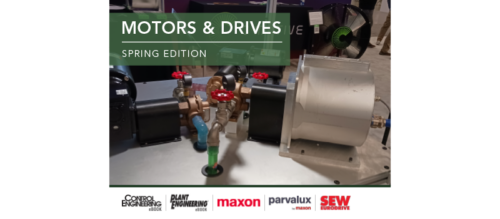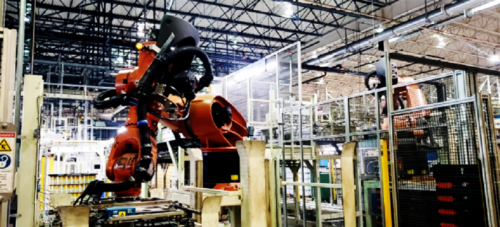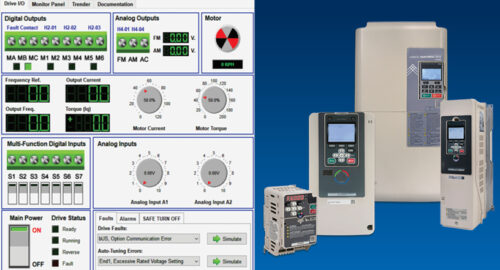Single-phase vs three-phase UPSs: How to choose the right one
Key concepts Today's utilities are not capable of delivering reliable power for most plant processes.
Learning Objectives
- Today’s utilities are not capable of delivering reliable power for most plant processes.
- There are three basic types of UPSs for protecting equipment: off-line, line-interactive, and on-line.
- Electrical distribution must be evaluated whenever new equipment is added.
Today’s automated manufacturing equipment, assembly lines, and large distributed control systems depend on reliable power to sustain operations. The consequences of a power disturbance or interruption can have dire results, including safety of the employees, equipment damage, defective products, late shipments, or lost business.
The growing emphasis on plant floor to boardroom data flow for enterprise resource planning (ERP) systems also relies on dependable power. The wired enterprise’s need for continuous power to support information technology now demands 24/7 (24-hr, 7-days/wk) operation at a level known as five-nines reliability (0.99999), which means in any single year, the power quality is below acceptable levels for less than 6 min.
For the plant engineer or manager, 0.99999 power reliability extends far beyond the capabilities of local electric utilities. Ongoing deregulation of utilities, as well as a growing demand for power, make this situation potentially more troublesome. The role of uninterruptible power supplies (UPSs) and generator systems requires greater attention from plant engineers than in years past as the digital age unfolds.
There are several considerations when deciding between a single-phase and three-phase UPS. This decision process should take into consideration a number of application variables and the overall functionality of both types of UPSs.
UPS topology choices
Power protection technology supporting desktop computers and workstations differs significantly from the advanced power management systems that protect mission critical equipment. This difference creates a lot of confusion in trying to understand the three basic types of UPSs (Fig. 1):
-
Off-line (system or data loss is an inconvenience)
-
Line-interactive (system or data loss is a serious problem)
-
On-line (system or data loss is unacceptable).
-
Off-line UPS
There are four components in an off-line UPS:
-
Input surge protection to safeguard the load from high voltage surges/spikes
-
Battery to power the inverter
-
Inverter to take dc battery voltage and create ac voltage required to power the equipment
-
Charger to maintain battery power.
Under normal conditions, the inverter is idle until the input voltage goes above or below a usable level. At that point, the inverter turns on and supplies the load with ac power.
Line-interactive UPS
A line-interactive UPS is similar to an off-line UPS. When it senses an under or over-voltage situation, the line interactive version also requires transfer time for the inverter to turn on and supply power to the load. The main difference between off-line and line-interactive UPS is that a line-interactive, in the stand-by mode, has active voltage regulation.
The primary advantage of a line-interactive over off-line UPS is that it doesn’t use its batteries nearly as often, which extends battery life.
On-line UPS
An on-line UPS has some of the same components as an off-line with a few differences, most notably a rectifier. The rectifier takes ac utility input voltage and changes it to dc voltage to charge the battery and provide dc power to the inverter. Both types have input surge protection, batteries, and inverter components.
In most on-line UPSs, the rectifier or filtering is used to ensure that the load, as well as the UPS, does not allow unnecessary noise and harmonics to be fed back into a building’s power. Because an on-line UPS is always creating its own power from the rectifier and inverter, it never has transfer interruptions and can provide a much higher quality of power.
Power requirements
In most plant central computer rooms, there are typically multiple vendors supplying various pieces of equipment. The electrical network system must be able to support all of their differing power requirements.
The plant’s electrical distribution network, as a power source, is generally a three-phase power configuration (Fig. 2). This configuration provides multiple voltages: three-phase power, single-phase (phase-to-phase), and single-phase voltage (phase-to-neutral).
Load evaluation and balancing
During plant evaluation and UPS installation, the engineering team distributes the electrical loads equally between the three phases of the electrical network system by ensuring that all are supplying the same amount of power to within 30% of each other.
This requirement has to be considered from the initial installation and must be reevaluated every time a new piece of equipment is added or removed. Ignoring this key step or increasing the load imbalance between phases could cause problems with the power source, which results in voltage regulation being lost or displacing the phase angles. It might also cause overheating and overloading of the power source.
Both single-phase and three-phase UPSs provide power protection for critical loads, but there are several important power loading considerations to evaluate.
A three-phase UPS can supply a 100% unbalanced load on its output without causing any problems or affecting its performance. With the inverter generating the power, it can also compensate for the unbalanced load and regulate the output voltage accordingly.
Single-phase UPSs (phase-to-phase or phase-to-neutral) act as a load on the main power source. This situation can cause an unbalanced load on the power source. The loads upstream to the UPS may have to be rewired to compensate for the unbalanced load.
Current demand on the input of a three-phase UPS is much less than the input current on a single-phase. The reduction in the input current results in a reduction in the input cable size and the upstream protection devices, such as circuit breakers.
Example:
If the load requirement is 10 kVA @ 280 Vac
Single-phase UPS input current is:
(10 kVAx1000)÷208 Vac = 48 amps
Three-phase UPS input current is:
(10 kVAx1000)÷208 Vac÷1.732 = 28 amps
This calculation indicates that the input current of a single-phase UPS is nearly twice that of a three-phase. Reduced input current requires smaller cables and circuit breakers, which shrinks installation and maintenance costs.
On the other hand, a single-phase UPS may be fine in a highly distributed cell or light manufacturing environment where there are a very large number of small UPSs. The higher upfront costs of networking these cells into one large system (if plant wide data collection is unimportant) may outweigh the benefit of a larger systems network approach. Data back up systems also can be installed to save information on a periodic basis. If the facility wasn’t initially set up for three-phase power, the additional retrofitting costs also might make a three-phase UPS prohibitive.
Cost of installation
Single-phase plug and play off-line or line-interactive UPSs are easy to install. The end user often does it during initial PC setup. Tieing each single-phase UPS into a network may not be easy, requiring extra cabling hardware as compared to supporting the entire network with a single three-phase UPS.
Three-phase UPSs protecting larger facilities or more critical loads require an electrical contractor to install the system. Upfront costs of using an electrical contractor can be relatively expensive, but a properly designed electrical power system with a UPS and backup generator can pay large dividends over the long-term by reducing electrical power costs and plant downtime.
Daily operation
With one three-phase UPS, all status and alarm functions can be monitored from a central point. To monitor the status of each single-phase UPS, they must be connected individually resulting in costly wiring runs.
In addition, the ability to quickly identify a defective single-phase UPS from a central location may be difficult. With a three-phase UPS, there is no doubt as to the location of the UPS.
Maintenance
Battery monitoring and replacement are by far the biggest maintenance tasks with both single and three-phase UPSs. Single-phase UPSs are often considered a disposable peripheral; just toss and replace when the batteries are dead. While this is convenient in one sense, it gets to be a time-consuming task when a plant is full of discrete single-phase UPSs in multiple locations that require constant checking one at a time, especially if there is no network on-line monitoring capability.
For many smaller-to-midsize facilities, which are experiencing growth, one of two problems begin to occur after retrofits. Either isolated (non-networked) UPSs fail during power interruptions due to undetected dead batteries in inconvenient or forgotten about locations or battery monitoring software goes off frequently in multiple locations, causing the plant maintenance staff to spend too much time on battery or UPS replacement.
With a single three-phase UPS, battery testing and replacement are more conveniently done at the network level. Testing can be performed from one central monitoring location with a single battery set, as opposed to testing the batteries of each single-phase UPS located throughout the building (which also can be done in a networked single-phase UPS system). Battery maintenance and replacement are performed in the plant’s computer room.
It is far less expensive to maintain one single set of batteries for a three-phase UPS than a large quantity of single-phase UPS module batteries. In most cases, the batteries for a single-phase UPS are not replaceable and the entire UPS must be replaced. Three-phase UPS modules can have single batteries replaced if they fail.
– Edited by Joseph L. Foszcz, Senior Editor,
Nonessential vs critical load applications
Are the loads to be protected small office PC-type or more critical equipment or plant network loads? Many single-phase UPS modules are line-interactive or off-line topology/design. This technology results in a brief interruption in the output power when transferring to and from the battery source. Critical manufacturing or process loads may not be able to tolerate this short interruption of power.
PCs, workstations, and peripheral equipment can be highly distributed throughout a facility in a decentralized or networked manner. The relatively low cost of entry-level, single-phase, off-line UPSs makes them attractive from a cost standpoint where standalone computers or smaller networks are in use and where a time-phased process shutdown or data loss is not critical.
On the flip side, most three-phase UPS modules are on-line. This topology transfers to and from battery and internal bypass without any interruption in power to the load, providing a truly seamless transfer to battery power. Complex, computer-driven, manufacturing processes often require time-phased shutdowns to avoid equipment damage or safety problems.
Important questions to ask in assessing the cost-benefit trade-offs for each UPS type
- How important are the loads (nonessential vs critical)?
- Which UPS topology best supports the applications?
- What are the power requirements (is three-phase power in use)?
- What are the load balancing needs?
- How difficult is UPS installation?
- What are the daily operational needs?
- When is maintenance required and. how extensive is it?
- What is the life-cycle cost of the system?
Do you have experience and expertise with the topics mentioned in this content? You should consider contributing to our CFE Media editorial team and getting the recognition you and your company deserve. Click here to start this process.





